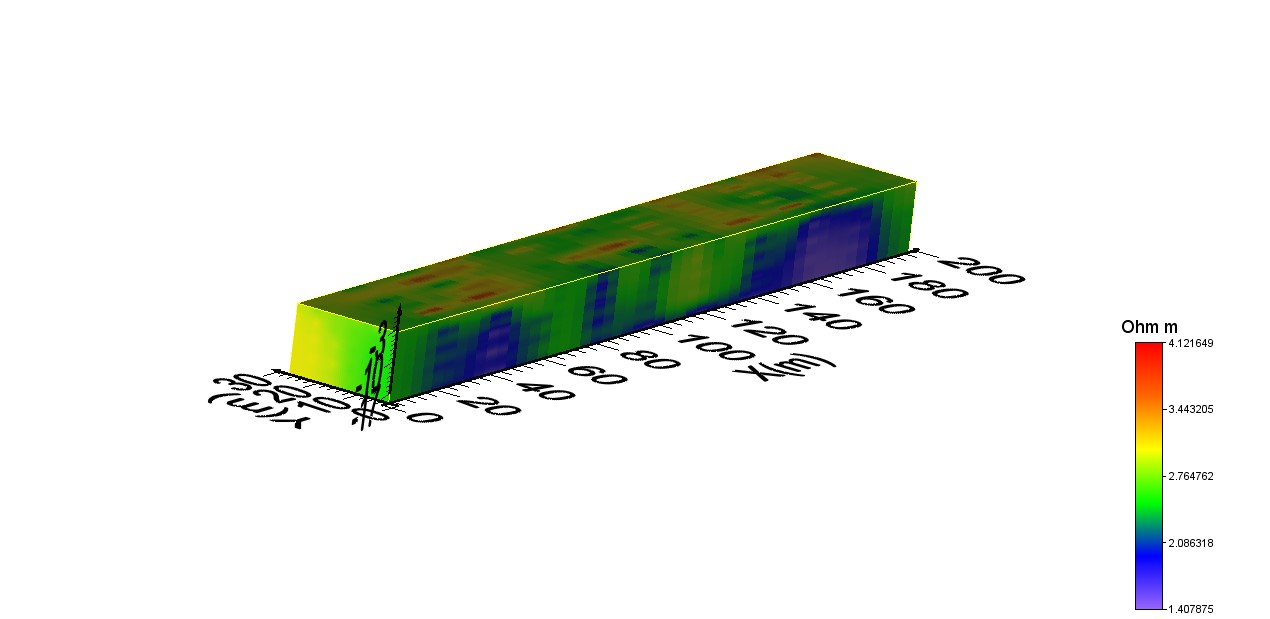The Impact of Typical Cemetery on Groundwater Using both Geophysical Techniques and Physicochemical Analyses of Water in South-South, Nigeria
Abstract
This research work focuses on the impact of cemetery on the groundwater with respect to time. It was carried out using Joint Geophysical Methods and Hydro physicochemical analysis. In addition to these methods this study went further to apply Multivariate Statistical Analyses (Water Quality Index, Principle Component Analysis, Cluster Analysis) in the investigation. This research work was done in Third Cemetery, New Benin, Benin City. Though there are three major cemeteries in Benin Metropolis Third Cemetery was selected for this purpose. In Benin City and Nigeria in general, the major cemeteries are located close to human residential areas and virtually all the populace within this locality depends on groundwater as the primary water source for various domestic purposes. The spread of electrodes reaches a maximum of 230m which covers the entire length of the cemetery. Electrodes (41) were needed in this research to generate data and the result compared with the physico-chemical analysis of groundwater. The field work covered a time lapse of six months (June, 2017 to December, 2017). Toxic chemicals that may be released into groundwater include substances that were used in embalming and burial practices as well as varnishes, sealers and preservatives and metal component of ornaments used on wooden coffins (Jonker and Olivier, 2012).Wood preservatives and paints used in coffin construction contain compounds such as copper, naphthalene and ammoniac or chromated copper arsenate (Spongberg and Becks, 2000). Paints contain lead, mercury, cadmium, and chromium; arsenic is used as a pigment, wood preservative and anti-fouling ingredient while barium is used as a pigment and a corrosion inhibitor (Katz and Salem, 2005; Huang et al., 2010; Jonker and Olivier, 2012).
References
Borstel, C. L., & Niquette, C. (2000). Testing Procedure for Historic Cemeteries; Cultural Resource Analysts, inc.: Lexington, KY, USA.
Canninga, L., & Szmigina, I. (2010). Death and disposal: The universal, environmental dilemma. J. Market. Manag, 26, 1129-1142. https://doi.org/10.1080/0267257X.2010.509580
Cude, C. (2001). Oregon water quality index: A tool for evaluating water quality management effectiveness. J. Amer. Water Res. Ass., 37, 125-137. https://doi.org/10.1111/j.1752-1688.2001.tb05480.x
Dent, B. B., & Knight, M. J. (1998). Cemeteries: A special kind of landfill. Groundwater: Sustainable Solutions, Conference of the International Association of Hydrogeologists, Melbourne, pp. 451-456.
DOC. (2016). Cemeteries, Burials and the Water Environment; A good practice guide for applicants and planning authorities when planning cemetery developments or extensions. Practice guide. Version 1.1. NIEA Natural Heritage Division, Belfast BT7 2JA.
Engelbrecht, P. (2010). Ground Water Pollution from Cemeteries-A Case Study. In Proceedings of Environmental: Situation and Perspectives for the European Union, Porto, Portugal, 6-10.
Ernest, H. (2010). A textbook of modern toxicology. John Wiley & Sons, Inc., Hoboken, New Jersey. 648 pp.
Hammer, M. J., & Hammer, M. J. (2004). Water Quality. In: Water and Wastewater Technology. 5th Edition. New Jersey: Prentice-Hall, pp. 139-159.
Huang, S. L., Yin, C. Y., & Yap, S. Y. (2010). Particle size and metals concentrations of dust from a paint manufacturing plant. J. Hazard. Mater., 174, 839-842. https://doi.org/10.1007/s11069-010-9509-6
Ibhadode, C. A. E., Dirius, A. R., & Akhimien (2017). Adequacy or otherwise of cemetery space for sustainable human body disposal in Benin City, Nigeria. Ethiopian Journal of Environmental Studies & Management, 10(5), 566-571.
Idehen, O. (2018). Time Lapse Geoforensic Investigation of Leachate Plume Migration from Active Cemetery in Benin City, Nigeria. Ph.D Thesis, University of Benin.
Idehen, O., & Ezenwa, I. M. (2019). Influence of Third Cemetery Location on the Quality of Domestic and Groundwater Resources in Benin City, Nigeria. Journal of Applied Sciences and Environmental Management, 23(1), 5-11. ISSN 1119-8362. https://doi.org/10.4314/jasem.v23i1.1
Ikhile, C. I., & Oloriode, D. O. (2011). Impact of climate change on underground-water resources development in Benin-Owena River basin, Edo State, Nigeria: case study. European Journal of Scientific Research, 63(2), 272-278.
Ikhuoria, I. A. (1987). Urban land use patterns in traditional Nigeria City: A case study of Benin City. Land use policy, Great Britain, 4(1), 62-75. https://doi.org/10.1016/0264-8377(87)90009-3
Jonker, C., & Olivier, J. (2012). Mineral Contamination from Cemetery Soils: Case Study of Zandfontein Cemetery, South Africa. Int. J. Environ. Res. Public Health, 9, 511-520. https://doi.org/10.3390/ijerph9020511
Katz, S. A., & Salem, H. (2005). Chemistry and toxicology of building timbers pressure-treated with chromated copper arsenate: A review. J. Appl. Toxicol., 25, 1-7. https://doi.org/10.1002/jat.1005
Kim, K. H., Hall, M. L., Hart, A., & Pollard, S. J. (2008). A survey of green burial sites in England and Wales and an assessment of the feasibility of a groundwater vulnerability tool. Environ. Technol, 29, 1-12. https://doi.org/10.1080/09593330802008404
Murray, R. C., & Tedrow, J. C. F. (1975). Forensic Geology: Earth Sciences and Criminal Investigation. Rutgers University Press, New Brunswick, New Jersey. ISBN 978-06-8135-0794-1.
Nigerian Industrial Standard NIS 554. (2007). Nigerian Standard for Drinking Water Quality ICS 13, 060.20 (c) SON 2007.
Sawyer, C. N., McCarthy, P. L., & Parkin, G. F. (2003). Chemistry for Environmental Engineering and Science.5th ed. McGraw-Hill, New York, 752 pp.
Spongberg, A. L., &Becks, P. (2000). Organic Contamination in Soils Associated with Cemeteries. Journal of Soil Contamination, 9(2), 87-97. https://doi.org/10.1080/10588330008984177
Tredoux, G., Cavé, L., & Engelbrecht, P. (2004). Groundwater pollution: Are we monitoring appropriate parameters? Water SA, 30(5) (Special edition), 114-119. https://doi.org/10.4314/wsa.v30i5.5180
Ucisik, A. S., & Rushbrook, P. (1998). The impact of cemeteries on the environment and public health – an introduction briefing. WHO, Regional Office for Europe, World Health Organization. Rept. EUR/ICP/EHNA 01 04 01 (A), 1-11.
Williams, A., Temple, T., Pollard, S., Jones, R., & Ritz, K. (2009). Environmental considerations for common burial site selection after pandemic events. In Criminal and Environmental Soil Forensics; Ritz, K., Dawson, L., Miller, D. Eds.; Springer: The Netherlands; pp. 87-101. https://doi.org/10.1007/978-1-4020-9204-6_7
Winter, T. C., Harvey, J. W., Franke, O. L., & Alley, W. M. (1998). Ground water and surface water a single resource. U.S. geological survey circular 1139. Denver, Colorado. https://doi.org/10.3133/cir1139
World Health Organization. (WHO) (2000). Regional Office for Europe, European Centre for Environment and Health, Nancy Project Office. The Impact of Cemeteries on the Environment and Public Health—TARGET 23: Waste Management and Soil Pollution; WHO Regional Office for Europe, European Centre for Environment and Health, Nancy Project Office: Copenhagen, Denmark.
Young, C. P., Blackmore, K. M., Leavens, A., & Reynolds, P. J. (2002). Pollution Potential of Cemeteries. Environment Agency England and Wales. Retrieved from https://www.gov.uk/government/uploads/system/uploads/attachment_data/file/290607/sprp2-024-1-e-e.pdf


This work is licensed under a Creative Commons Attribution 4.0 International License.
Copyright for this article is retained by the author(s), with first publication rights granted to the journal.
This is an open-access article distributed under the terms and conditions of the Creative Commons Attribution license (http://creativecommons.org/licenses/by/4.0/).








1.png)














